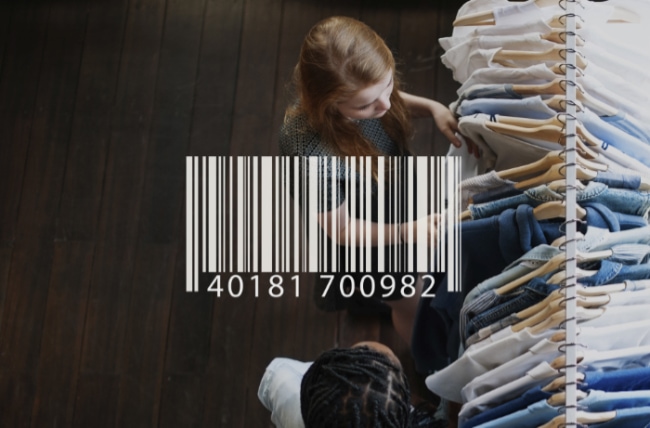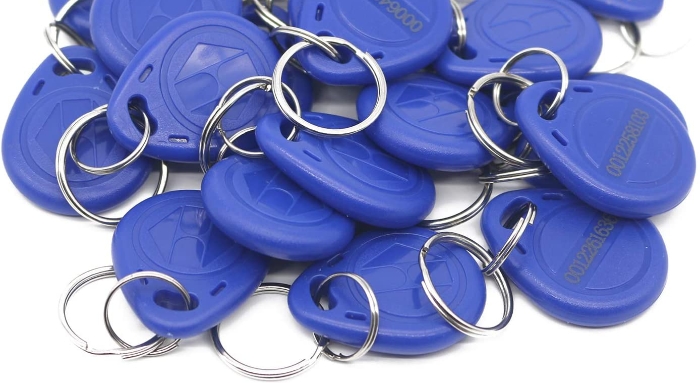RFID vs. Barcode: Which One Should You Choose?
Businesses today are implementing electronic solutions into different processes, and two of these technologies are RFID and barcode.
Usually implemented in security systems and scanners, both technologies are being implemented worldwide to revolutionize production processes.
However, both have their pros and cons. To make the issue clearer, we've written this article explaining these technologies and what benefits they entail.
What Is RFID?
RFID, or Radio Frequency Identification, is a method of communication between a tag and a reader that uses radio waves.
An RFID tag has an inbuilt sensor and antenna that transmits data to the receiver. RFIDs are usually used for individual identification purposes, like RFID cards for employees.
Unlike barcodes, RFID doesn't require line of sight visibility, making it easier to automate specific processes where barcode reading may be less efficient.
What Is Barcode?
Barcode is lines of black and white that can be scanned for information. This is usually a sequence that is used to identify different products.
Barcode is less recent than RFID and is much more accessible in the sense that mobile phones can be used to read certain types of barcodes.
Barcodes require a line of sight to properly function and cannot simultaneously scan more than one item at a time.
RFID: The Pros and Cons
RFID is the more recent technological advancement than barcodes and comes with several advantages.
- You can scan multiple items simultaneously.
- You can identify individual items with their unique IDs
- No line of sight is required
- RFID tags can hold larger capacities of data than barcodes
- Data can be encrypted
- More accurate
- It can be used to read and write data
However, there are certain disadvantages to using this technology as well.
- RFID systems are much more expensive than barcode readers
- Installation can be much more time consuming
- Metal or liquid can interfere with the reading function
- Simultaneous reading can lead to several tags responding at the same time
Barcode: The Pros and Cons
Barcode is the more traditional system of the two, but they do have their advantages.
- Smaller and lighter
- It can be printed and used
- Much cheaper than RFID
- More business applications compared to RFID
However, the disadvantages of barcode are to be noted as well:
- Require line of sight to operate
- Lesser range than RFID
- No write functions
- Stores less data than RFID
- Require human interaction
- It can be easily damaged
- Barcode readers cannot read ripped barcodes
Which One Should You Choose?
Choosing a scanning system is usually a one-time investment; therefore, you need to be sure that you're making the right choice since the installation costs can be hefty.
Choosing either one of the two systems can depend on one of the following factors:
- What you need to scan.
- What level of security is required?
- What your budget is.
RFID systems shine where you need to identify individual assets and have three different frequencies catering to different processes.
Low-Frequency RFID
These RFID systems require the tag to be in close proximity in order to be read.
Low-frequency RFID systems are usually used in access control scenarios, where employees are issued a unique RFID. These can be used to access different parts of the building.
These are much more secure than barcodes since users can reprint barcodes, and the reader won't be able to distinguish between an original and a copy.
High-Frequency RFID
These have a range of 1-3 feet and are generally used in streamlining scanning processes.
High-end stores and libraries generally use high-frequency RFIDs to improve scanning. Libraries use RFID to identify books according to their categories and location to improve efficiency.
Shops use RFID to detect any items being removed from the premises. That's why you'll note that employees remove a tag from an article of clothing after you have purchased it.
Ultra-High Frequency
UHF RFID systems are used in warehouses and wholesale distribution centers. These can track multiple items at long range, and are great for tracking sent and received shipments, and can be installed on dock doors to increase efficiency in tracking pallets coming through.
Barcode Systems
Barcode systems are still used extensively, especially in the retail sector. The reason behind this is the general nature of products being sold in supermarkets. Since these only require minimal information like name, SKU, price, etc.
Barcodes are more than enough for products like this since you don't need to have a high level of security and don't need to identify every product individually.
Implementing an RFID System
RFID systems require much more planning before you can implement a successful system. Installing an RFID system without proper planning might harm your business since it won't be able to deliver its complete utility.
RFID systems require you to implement them in stages compared to barcode systems. If one part works well, then you can proceed with the complete installation and implementation.
Transitioning From a Barcode System to an RFID System
Specific solutions provide a sort of hybrid reader, which can be used to read barcodes and serve as an RFID reader as well.
This might be better if you plan to scale your business in the future and don't want to undergo the hassle of completely overhauling your current system.
Conclusion
Getting an RFID system or even a barcode system is still better than conventional tracking methods. By removing human error (to some extent), businesses can improve their efficiency and deliver more.
Individual tagging allows you to track one or more products at any stage of the production process, and you can use these to track faulty products with their batches.
This is especially useful in manufacturing businesses, where faulty products might require you to check batches and any issues in the production line.
Both barcode readers and RFID systems have their pros and cons, and it depends on what use you will have of these systems that will determine the better option.
Hopefully, this article will have solved your query, and you're well on your way to improving your business!




